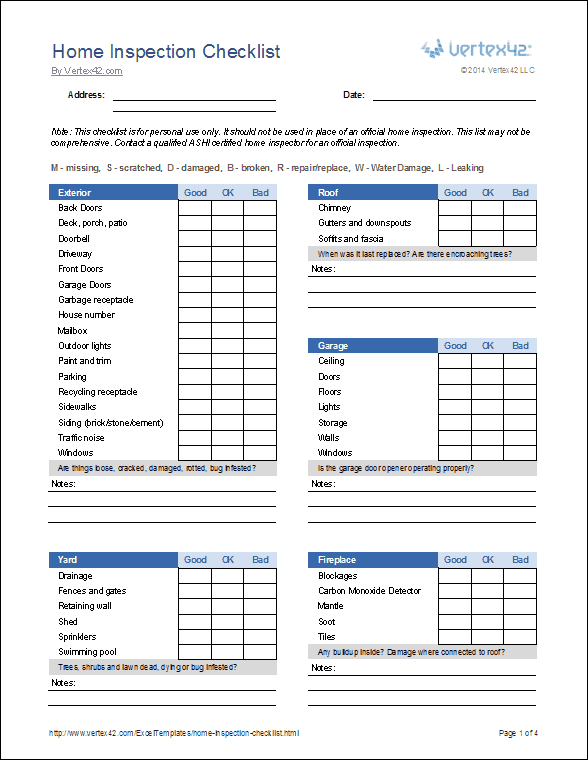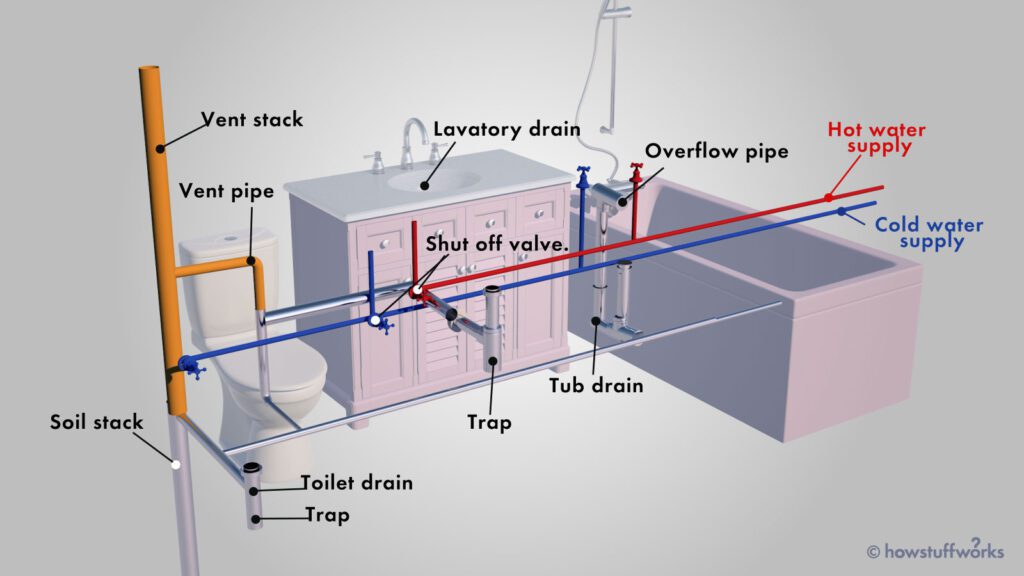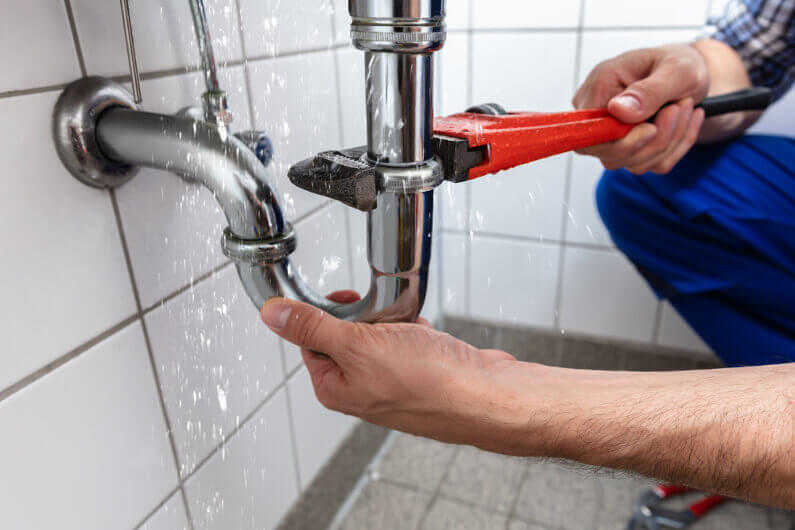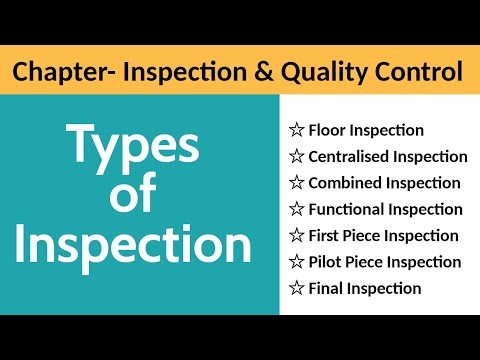Do you often wonder what an inspection checklist is? An inspection checklist is a handy tool used by professionals in various industries to ensure that all necessary steps and requirements are met during an inspection process. Whether it’s for a home inspection, a safety inspection, or a quality control check, the inspection checklist serves as a guide, helping inspectors stay organized and thorough. It assists in keeping track of all the essential tasks, measurements, and observations that need to be made, making the inspection process more efficient and reliable.


1. What is an Inspection Checklist?
1.1 Definition
An inspection checklist is a systematic tool used to assess and evaluate the condition, quality, or compliance of something. It provides a structured format for inspectors to follow during inspections, ensuring that nothing is overlooked and all necessary aspects are covered. The checklist typically contains a list of items or criteria that need to be examined, with space for inspectors to document their findings.
1.2 Purpose
The main purpose of an inspection checklist is to ensure thoroughness and consistency during inspections. It serves as a guide for inspectors, helping them identify any faults, deficiencies, or areas of non-compliance. By following a standardized checklist, inspectors can objectively evaluate the condition of an item, property, or process, and make informed decisions based on their findings.
1.3 Importance
Inspection checklists are essential for various industries and contexts, including pre-purchase assessments, safety inspections, maintenance evaluations, construction site inspections, and rental property assessments. They are a crucial tool for ensuring the quality, safety, and compliance of goods, services, facilities, or processes. Inspection checklists help prevent accidents, identify potential risks or hazards, facilitate timely maintenance, and enhance overall quality control.
2. Types of Inspection Checklists
2.1 Pre-purchase Checklist
A pre-purchase checklist is used when buying a property, vehicle, or any other significant asset. It includes items such as structural condition, electrical and plumbing systems, appliances, and other features that need to be evaluated before making a purchase. This checklist helps potential buyers make informed decisions and avoid unexpected expenses or surprises after the purchase.
2.2 Safety Checklist
A safety checklist is designed to ensure the safety of individuals working in a particular environment, such as a workplace, construction site, or public facility. It includes items related to fire safety, emergency exits, protective equipment, hazardous materials, machinery safety, and other safety protocols. This checklist helps identify potential safety risks and ensures that appropriate measures are in place to prevent accidents or injuries.
2.3 Maintenance Checklist
A maintenance checklist is used to assess the condition and functionality of equipment, machinery, or systems that require regular maintenance. It includes items such as lubrication, filter replacement, cleaning, calibration, and other routine tasks necessary to keep the equipment in optimal working condition. This checklist helps prevent breakdowns, prolong equipment lifespan, and ensure efficient operation.
2.4 Construction Checklist
A construction checklist is used to evaluate construction sites and ensure compliance with building codes, safety regulations, and quality standards. It includes items related to structural integrity, electrical and plumbing systems, construction materials, safety measures, and other aspects of the construction process. This checklist helps identify potential issues or deviations from the plan, ensuring that the construction project meets the required standards.
2.5 Rental Property Checklist
A rental property checklist is used by landlords or property managers to assess the condition of rental properties before and after a tenancy. It includes items such as cleanliness, functionality of appliances, presence of damage or wear and tear, and other factors that may affect the habitability of the property. This checklist helps landlords ensure that their properties are in suitable condition for tenants and helps document any pre-existing damage.
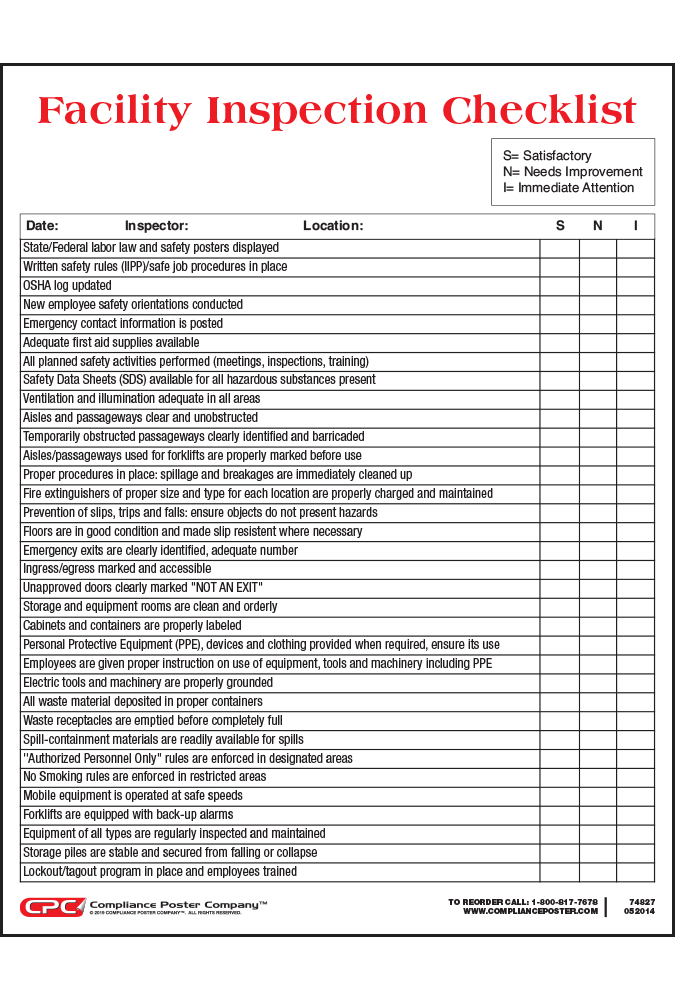

3. Creating an Inspection Checklist
3.1 Identify the Purpose
Before creating an inspection checklist, it is essential to identify the specific purpose or objective of the inspection. Clearly defining the purpose will help determine the scope and focus of the checklist and ensure that all critical aspects are addressed during the assessment.
3.2 Determine the Scope
Once the purpose is established, it is necessary to determine the scope of the inspection. This involves identifying the areas, items, or processes that need to be included in the checklist based on their relevance to the purpose.
3.3 List all Necessary Items
Create a comprehensive list of all the items that need to be inspected within the determined scope. This list should include specific details relevant to the purpose of the inspection. For instance, if creating a safety checklist for a workplace, items such as fire extinguishers, emergency exits, and personal protective equipment should be included.
3.4 Organize the Checklist
Organize the checklist in a logical and sequential manner to ensure that inspections are conducted systematically. Group related items together and consider the most efficient order for performing the inspection. This organization will help inspectors navigate through the checklist and ensure that no items are missed or overlooked.
3.5 Add Details and Instructions
Provide clear and concise instructions for each item on the checklist. Include any specific guidelines, procedures, or standards that need to be followed during the inspection. Clear instructions will help inspectors understand the expectations and requirements for each item.
3.6 Include Inspection Criteria
Define inspection criteria or standards for each item on the checklist. These criteria will serve as the basis for evaluating the condition or compliance of the item. Clearly specify what constitutes a pass, fail, or requires further action to ensure consistency and fairness in the assessment.
3.7 Define the Frequency of Inspections
Determine how often the inspections should be conducted. Depending on the nature of the inspection and its purpose, it may be necessary to conduct inspections daily, weekly, monthly, annually, or on an as-needed basis. Clearly define the frequency to ensure regular and timely evaluations.
4. Using an Inspection Checklist
4.1 Review the Checklist before Inspection
Before conducting an inspection, it is crucial to review the checklist thoroughly. Familiarize yourself with the items, instructions, and criteria to ensure a smooth and efficient inspection process. Reviewing the checklist beforehand will also help identify any potential issues or areas that require further clarification.
4.2 Follow Systematic Procedures
During the inspection, follow the checklist systematically, item by item. Pay close attention to each detail, verifying and documenting the condition or compliance of each item as per the checklist. Maintaining a systematic approach will help ensure consistency and accuracy in the assessment.
4.3 Document Findings
Document all the findings, observations, and any necessary remarks or comments during the inspection. Ensure that the documentation is clear, concise, and includes all relevant details. Documenting the findings will provide a record of the inspection and serve as a reference for future evaluations.
4.4 Prioritize and Address Issues
After completing the inspection, prioritize the identified issues based on their severity or impact. Determine which issues require immediate action and which can be addressed later. This prioritization will help allocate resources effectively and ensure that critical issues are resolved promptly.
4.5 Use Technology for Efficiency
Consider utilizing technology to streamline the inspection process and improve efficiency. Inspection checklist apps or software can automate tasks, provide real-time reporting, and facilitate easy data management. These tools can save time, reduce administrative efforts, and enhance overall inspection productivity.
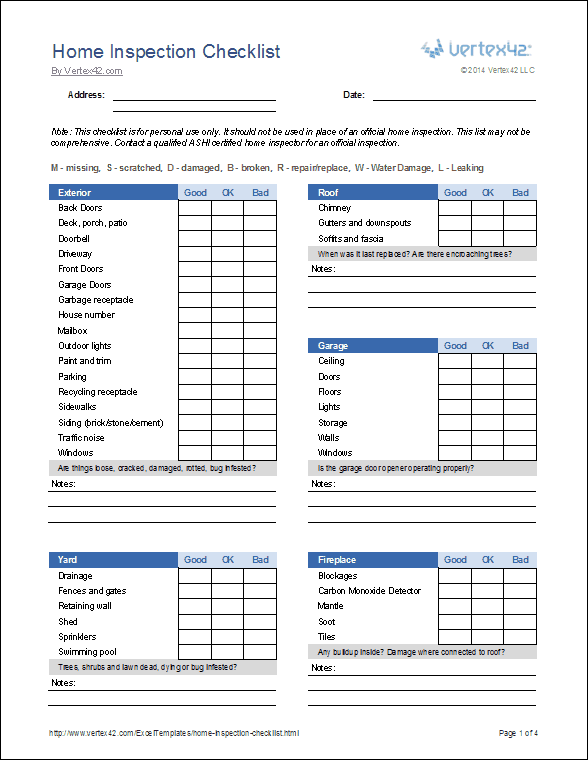

5. Benefits of Using an Inspection Checklist
5.1 Standardization and Consistency
Using an inspection checklist ensures standardization and consistency in the assessment process. The same items and criteria are evaluated across different inspections, reducing the risk of subjective judgments or oversight. This standardization helps maintain the quality and integrity of inspections.
5.2 Improved Accuracy and Thoroughness
Inspection checklists serve as a reminder for inspectors, ensuring that no significant aspects or items are missed during the assessment. By following a checklist, inspectors are more likely to be thorough and accurate in their evaluations. This attention to detail helps identify potential issues or non-compliance that may have otherwise been overlooked.
5.3 Time and Cost Savings
Inspection checklists help streamline the inspection process, making it more efficient and reducing the time required for assessments. By following a structured checklist, inspectors can complete their evaluations more quickly and move from one item to another seamlessly. This efficiency translates into cost savings, as less time and resources are spent on inspections.
5.4 Enhanced Communication and Accountability
Using an inspection checklist promotes clear communication and accountability between inspectors, supervisors, and stakeholders. The checklist serves as a documented record that can be shared and referenced by all parties involved. It helps ensure that expectations are clearly communicated, and responsibilities are established for each item on the checklist.
6. Tips for Effective Inspections
6.1 Train Inspectors
Properly train inspectors on the purpose, scope, and procedures related to the inspection checklist. Provide them with the necessary knowledge and skills to conduct thorough assessments and accurately interpret the checklist criteria. Ongoing training and development will help maintain the effectiveness and proficiency of inspectors.
6.2 Regularly Update Checklists
Checklists should be regularly updated to reflect changes in regulations, standards, or best practices. As new information becomes available or industry requirements evolve, ensure that the checklist is revised and updated accordingly. Regular updates will help maintain the relevance and effectiveness of the inspection checklist.
6.3 Use a Digital Platform
Consider using a digital platform or inspection checklist software to streamline the inspection process. Digital platforms eliminate the need for manual paperwork, provide real-time synchronization of inspection data, and offer features such as automatic reminders or notifications. Using technology can enhance efficiency, accuracy, and accessibility during inspections.
6.4 Involve Stakeholders
Involve relevant stakeholders in the inspection process whenever possible. Their input and feedback can provide valuable insights and help improve the effectiveness of inspections. Engaging stakeholders also promotes a sense of ownership and accountability for the outcomes of the inspections.
6.5 Analyze Inspection Data
Regularly analyze the inspection data collected from the checklist to identify trends, patterns, or recurring issues. This analysis can provide valuable insights for process improvement, risk mitigation, or corrective action planning. By leveraging the data collected through inspections, organizations can make informed decisions to enhance overall quality and compliance.


7. Examples of Inspection Checklists
7.1 Home Inspection Checklist
A home inspection checklist typically includes items such as structural integrity, electrical and plumbing systems, HVAC systems, appliances, and other features of a residential property. It helps assess the overall condition, safety, and functionality of the home and identify any potential maintenance or repair needs.
7.2 Workplace Safety Checklist
A workplace safety checklist focuses on evaluating the safety measures and compliance within a workplace environment. It includes items such as fire safety, emergency exits, hazard communication, personal protective equipment, ergonomics, and other safety protocols. This checklist helps ensure a safe working environment for employees and compliance with safety regulations.
7.3 Vehicle Inspection Checklist
A vehicle inspection checklist is used to evaluate the condition of vehicles, including cars, trucks, or fleet vehicles. It includes items related to the vehicle’s exterior, interior, engine, tires, brakes, lights, and other components. This checklist helps identify any mechanical issues, faults, or safety concerns that need to be addressed before the vehicle is deemed roadworthy.
7.4 Facility Maintenance Checklist
A facility maintenance checklist is designed to assess the condition and functionality of various systems and components within a facility. It includes items related to electrical systems, HVAC systems, plumbing, lighting, security, parking areas, landscaping, and other maintenance aspects. This checklist helps identify any maintenance needs and ensures the optimal functioning of the facility.
8. Common Mistakes to Avoid
8.1 Incomplete or Disorganized Checklists
Ensure that the checklist is comprehensive and covers all relevant items or criteria. Avoid oversight by thoroughly reviewing and updating the checklist before each inspection. Additionally, organize the checklist in a logical sequence to ensure a smooth and systematic inspection process.
8.2 Neglecting Inspection Details
Pay attention to the details during inspections. Avoid rushing through the checklist or skipping steps. Thoroughly assess each item and document accurate findings to ensure the inspection is thorough and accurate. Neglecting inspection details may result in missed issues or inaccurate assessments.
8.3 Failing to Update Checklists
Checklists should be regularly reviewed and updated to reflect any changes in regulations, standards, or best practices. Failing to update the checklist may lead to outdated or irrelevant criteria, compromising the accuracy and effectiveness of inspections. Stay proactive and keep the checklist up to date.
8.4 Relying Solely on Checklists
While checklists provide guidance and structure, they should not replace professional judgment or expertise. Inspectors should possess the necessary knowledge and training to interpret and apply the checklist criteria appropriately. Relying solely on the checklist without critical thinking may result in overlooking important factors or context.
8.5 Ignoring Stakeholder Feedback
Stakeholder feedback is invaluable for improving the effectiveness of inspections. Actively seek feedback from inspectors, supervisors, and other relevant parties involved in the inspection process. Ignoring stakeholder feedback may hinder the ability to address potential improvement areas or identify blind spots in the inspection process.


9. Inspection Checklist Software and Apps
9.1 Benefits of Using Software
Inspection checklist software or apps offer numerous benefits over traditional pen-and-paper checklists. They provide a digital platform for creating, managing, and conducting inspections, streamlining the entire process. Some benefits of using software include real-time synchronization of data, automatic notifications, report generation, and easy access to historical inspection records.
9.2 Popular Inspection Checklist Software and Apps
There are several popular software and apps available for creating and conducting inspections. Some widely used options include iAuditor, SafetyCulture, ProntoForms, InspectionXpert, and GoCanvas. These software and apps offer a range of features to customize checklists, capture inspection data, generate reports, and facilitate collaboration among inspectors and stakeholders.
10. Frequently Asked Questions (FAQs)
10.1 What Should be Included in an Inspection Checklist?
An inspection checklist should include all relevant items or criteria that need to be assessed during the inspection. This may vary depending on the purpose of the inspection, such as safety protocols, compliance requirements, or specific features of the item being inspected.
10.2 How Often Should Inspections be Done?
The frequency of inspections depends on several factors, including the nature of the inspection, industry regulations, and the specific requirements of the item or process being inspected. Inspections may be conducted daily, weekly, monthly, annually, or on an as-needed basis.
10.3 Can Inspection Checklists be Customized?
Yes, inspection checklists can be customized according to the specific requirements of an organization or industry. Checklists can be tailored to address unique needs, compliance regulations, or specific inspection criteria.
10.4 Can Inspection Checklists be Used Across Industries?
While there may be industry-specific requirements or regulations, the concept of inspection checklists can be applied across various industries. The principles of thorough assessments, documentation, and compliance are universally applicable and can be adapted to different contexts. However, the specific items or criteria included in the checklist may vary for each industry.

